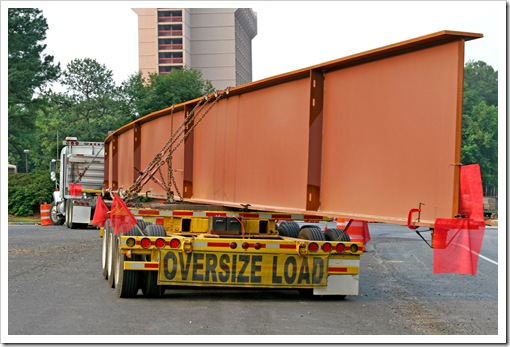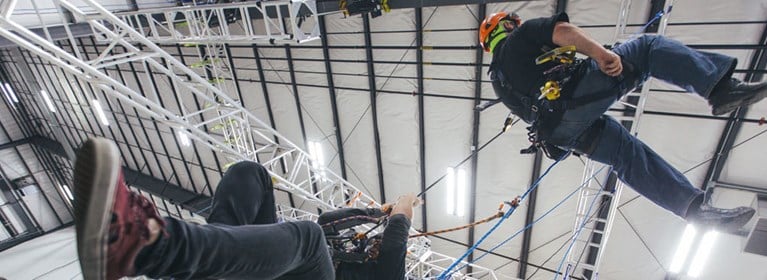
Chain has been used by people to pull, fasten and pick things up for over 2000 years. The form of chain has not changed much over the years, whereas the manufacturing of chain has. With the modern advances in metallurgy and manufacturing techniques, chain is a much better quality today. During these advances we have come to realize that we can control the quality of chain. Even though all chain has the basic same shape it does not mean all chain has the same properties. For example, we have several grades of chain; 30, 43, 70, 80 & 100. Each grade has different properties.
Understanding the Different Grades of Chain
Grade 80 & 100 chains are manufactured with alloys that allow them to stretch or elongate. This visible deformation alerts the operator that the chain must be removed from service. Alloy chains are designed for overhead lifting. The lower grades (30, 43 & 70) are carbon chain designed for pulling, agricultural & load securement applications. These grades are not designed for overhead lifting.
Determining a Chain’s Grade, Size and WLL
The best way to know what grade of chain you have is to look on the links themselves. Each chain link should be embossed with the grade, size & manufacturer’s name. All manufactured chain should have these markings, which will allow the user to determine the working load limit (WLL) of the chain.
WLL charts are available from the US D.O.T. or the chain manufacturer. Columbus McKinnon offers an online WLL calculator here.

Using Chain as Tie-Downs
The one thing all of these chains have in common is that all can be used as tie-downs. The majority of chain used for tie-downs is Grade 70, also known as transport chain. It is easily recognized because of the gold colored plating which distinguishes it from other chains; however, we recommend that the operator verify the grade by its embossed identification.
A Typical Application for Chain Tie-Downs
Let’s say Phil picks up a load and uses the tie-downs he has had on his truck for years. When he purchased them new they were Grade 70, 3/8” chain with a WLL of 6,600lbs. Over time the plating has worn off and the embossing has become illegible, but Phil knows what the tie-downs are. So Phil finishes securing his load and starts down the highway. He drives for a few hundred miles and pulls into a truck inspection station, confident he has the proper size and number of tie-downs for the load he is carrying.
The inspection is going well until the inspector starts looking at the load and the securement. The markings on the chain are not legible so he uses the Grade 30 WLL rating for 3/8” chain. This is less than half of what Grade 70 3/8” chain is rated for. Phil argues that the chains are Grade 70 but the inspector can only go by what he has in front of him and has to grade them as Grade 30. Citing it as a lower grade chain reduces the WLL below what is required for Phil’s load.
According to Federal Motor Carrier Safety Administration (FMCSA) 393.108d, if the marks are not visible or not legible the inspector will consider this tie-down to be the lowest grade (Grade 30). This reduction in grade can result in taking you out of service and possibly a citation.
When it’s all said and done, let’s be safe.
Make sure that the tie-downs you are using are the proper size and grade for your load, are clearly identified as such, and are not damaged or deformed. After all the tie-downs do not belong to your customer, they belong to you. If you’re not sure whether to use 4 or 5 tie-downs, use 5 — the worst case scenario is that you’ll have more rather than less.
It’s Always Good to Get Trained
Whether you’re a road-hardened veteran or new to the industry, we encourage you to get properly trained on how to use & inspect load securement equipment, and stay up to date on regulations and requirements. As an additional resource, check out our Load Securement Safety Webinar.
North America - EN







